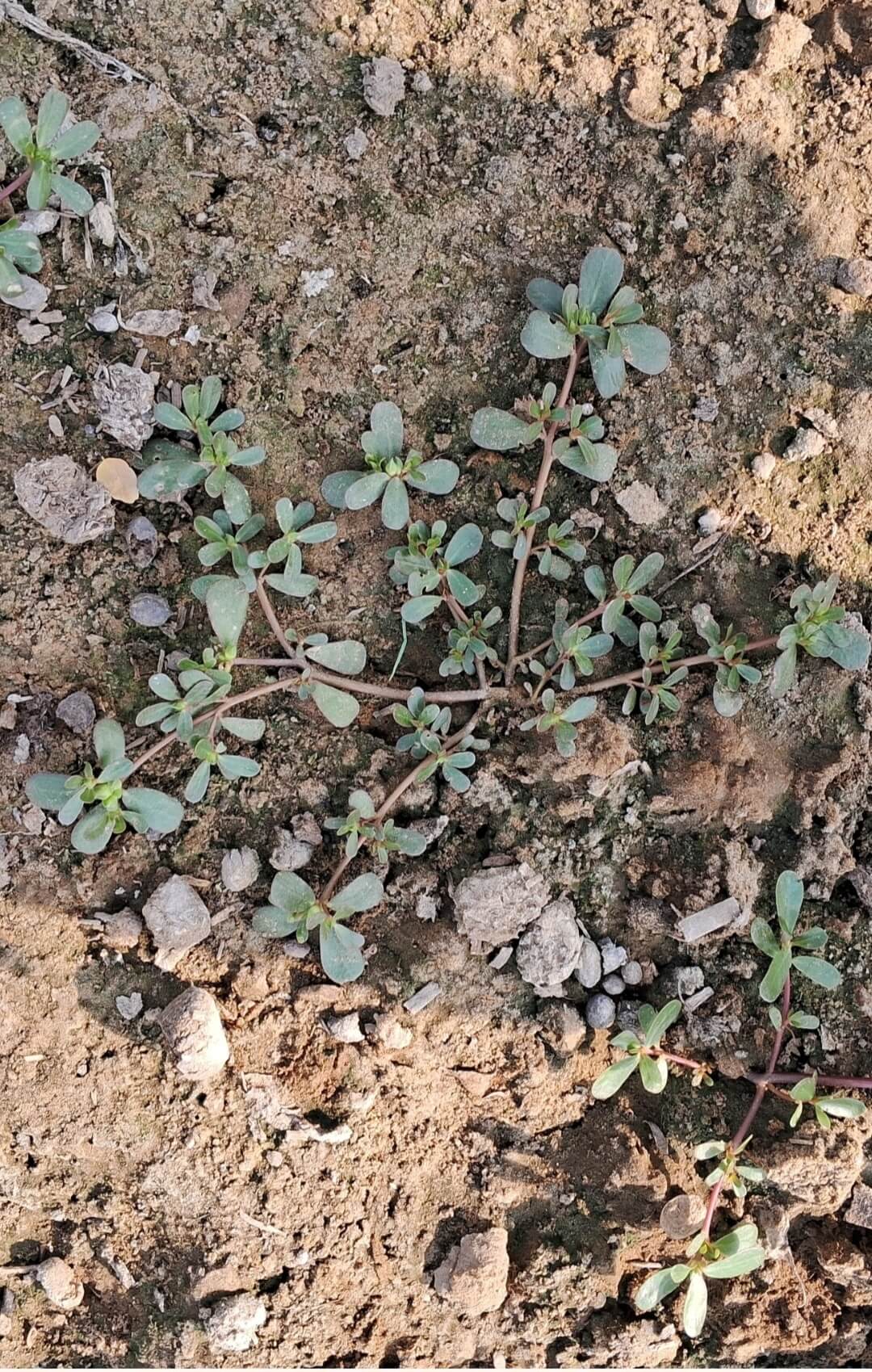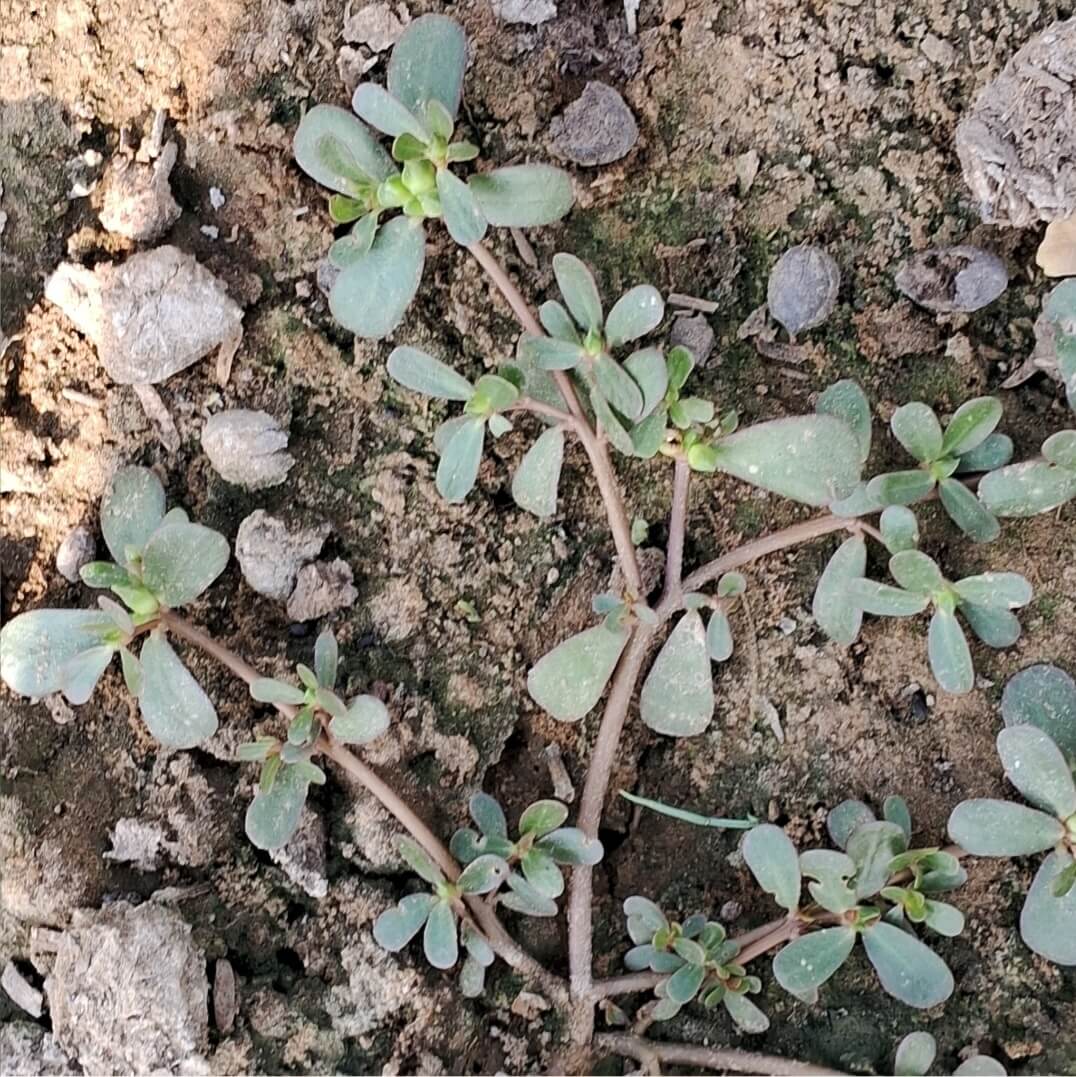IUCN Status
- Portulaca consanguinea Schltdl.
- Naturally grown
-
It is a native succulent herb with numerous spreading branches, usually purplish red.
Root: Tap root, much branched.
Stem: Aerial, creeping, branched, herbaceous, succulent, solid, glabrous, except for few stipular hairs.
Leaves: Alternate or somewhat opposite, usually clustered at ends of branches, subsessile or sessile, simple, cuneate-obovate or spathulate, fleshy, apex rounded or truncate, venation unicostate reticulate, stipules represented by hairy appendages or absent.
Inflorescence: Terminal clusters, sometimes with solitary flowers, surrounded by hairs.
Flower: Ebracteate, sessile, complete, actinomorphic, bisexual, perigynous, pentamerous, cyclic.
Calyx: 2, antero-posterior, free, anterior sepal overlapping the posterior one, green, ovate to orbicular, keeled on back.
Corolla: 5, free, imbricate, oblong-obovate, retuse at tip, yellow.
Androecium: 6-12, free, in one whorl, filaments slender, anthers bithecous, basifixed, introrse.
Gynoecium: Tri-pentacarpellary syncarpous, half-inferior, unilocular ovary, styles 3-5, free, stigmas simple and minute.
It is one of the richest green plant source of Omega-3 fatty acids.
Stem, Leaves and flowers are edible and have a slightly sour and salty taste.Source: Gurcharan Singh
-

1000041589
Portulaca oleracea: Habit
